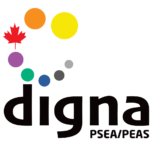Tools
- Care Emergency Toolkit
- Country Level Checklist on the Minimum Actions Required on the Protection from Sexual Exploitation and Abuse – IASC
- Developing and Modelling a Positive Safeguarding Culture – Bond
- Developing Child Safeguarding Policy and Procedures: A Facilitator’s Guide – Keeping Children Safe
- Fact Sheet: Prevention of Sexual Exploitation and Abuse – Canadian Red Cross
- Guidance for the Development of a Prevention of Sexual Exploitation, Abuse and Harassment Policy – Australian Council for International Development
- Hotline in a Box (toolkit) – IFRC
- How to Consider Language When Researching Sexual Exploitation, Abuse and Sexual Harassment (SEAH) – Resource and Support Hub
- How to Design and Deliver Safe and Ethical Monitoring, Evaluation and Research – Resource and Support Hub
- How to Research Sexual Exploitation, Abuse and Sexual Harassment Safely (SEAH) – Resource and Support Hub
- Interim Harmonized Implementation Tool: United Nations Implementing Partner PSEA Capacity Assessment – IASC
- KEEPING PEOPLE SAFE: a guide to safeguarding for non-governmental organizations and platforms – Forus and Digna
- Manual on Prevention and Response to Sexual Exploitation and Abuse (PSEA) – Canadian Red Cross
- Organizational Checklist on Sexual Violence – AQOCI
- Partnerships – Bond
- Preventing & Responding to Sexual Exploitation & Abuse – World Health Organization (WHO)
- Protection is Possible. How an innovative operating model strengthened safeguarding for the Girls’ Education Challenge – UKaid
- PSEA Assessment & PSEA Toolkit: For CSO Partners – UNICEF
- PSEA Implementation Quick Reference Handbook – CHS Alliance
- PSEA Infographic Response – BCCIC
- PSEA Prevention Infographic – BCCIC
- Safeguarding Children and Young People Policy Guidance – Plan International
- Safeguarding Children and Young People Policy Guidance: Safety on Online Platforms – Plan International
- Safeguarding Children in Emergencies – Keeping Children Safe (KCS)
- Safeguarding Chilrdren and Young People Policy – Plan International
- Safeguarding in Emergencies Toolkit – Save the Children
- Safeguarding in Monitoring, Evaluation, Accountability, Learning (MEAL) and Research – Save the Children
- Safeguarding in Programming and Influencing Work : A Quick Overview and Guide – Plan International
- Safeguarding in Programming and Influencing Work : Guidelines – Plan International
- Safeguarding report-handling toolkit – Bond
- Self-assessment Tool – Keeping Children Safe
- Sexual Exploitation and Abuse in the Aid Sector – UK Parliament
- Sexual Exploitation and Abuse: Risk Management Toolkit – UN
- Sexual Harassment, Exploitation, and Abuse: A Toolkit for Building a Prevention and Response Program – Chemonics
- Sexual Violence in the International Development Sector – AQOCI
- Summary of IASC Good Practices: Preventing Sexual Exploitation and Abuse and Sexual Harassment and Abuse of Aid Workers – IASC
- Tip Sheet: People with disabilities and the Safeguarding Journey – Resource and Support Hub
- Toolkit A: Examples of Codes of Conduct – Policy Programs – Digna
- Toolkit B: Examples of Risk Assessment and Management – Digna
- Toolkit C: Examples of Report Forms – Digna
- Toolkit D: Examples of Flowcharts – Digna
- Toolkit E: Examples of PSEA Audit and Self-Assessment – Contacts Within the Organizations and Partners – Digna
- Toolkit F: Examples of Feedback Forms
- Toolkit G: Examples of Monitoring Surveys/Evaluation Tools – Digna
- Toolkit H: Examples of Visuals – Digna
- Toolkits for Addressing PSEA – Digna
- Understanding Effective Safeguarding Culture – Bond
- Understanding the differences between Sexual Exploitation and Abuse, Sexual Harassment and Sexual and Gender Based Violence – IASC
- UNICEF Strategy to Prevent and Respond to Sexual Exploitation and Abuse and Sexual Harassment – Unicef
